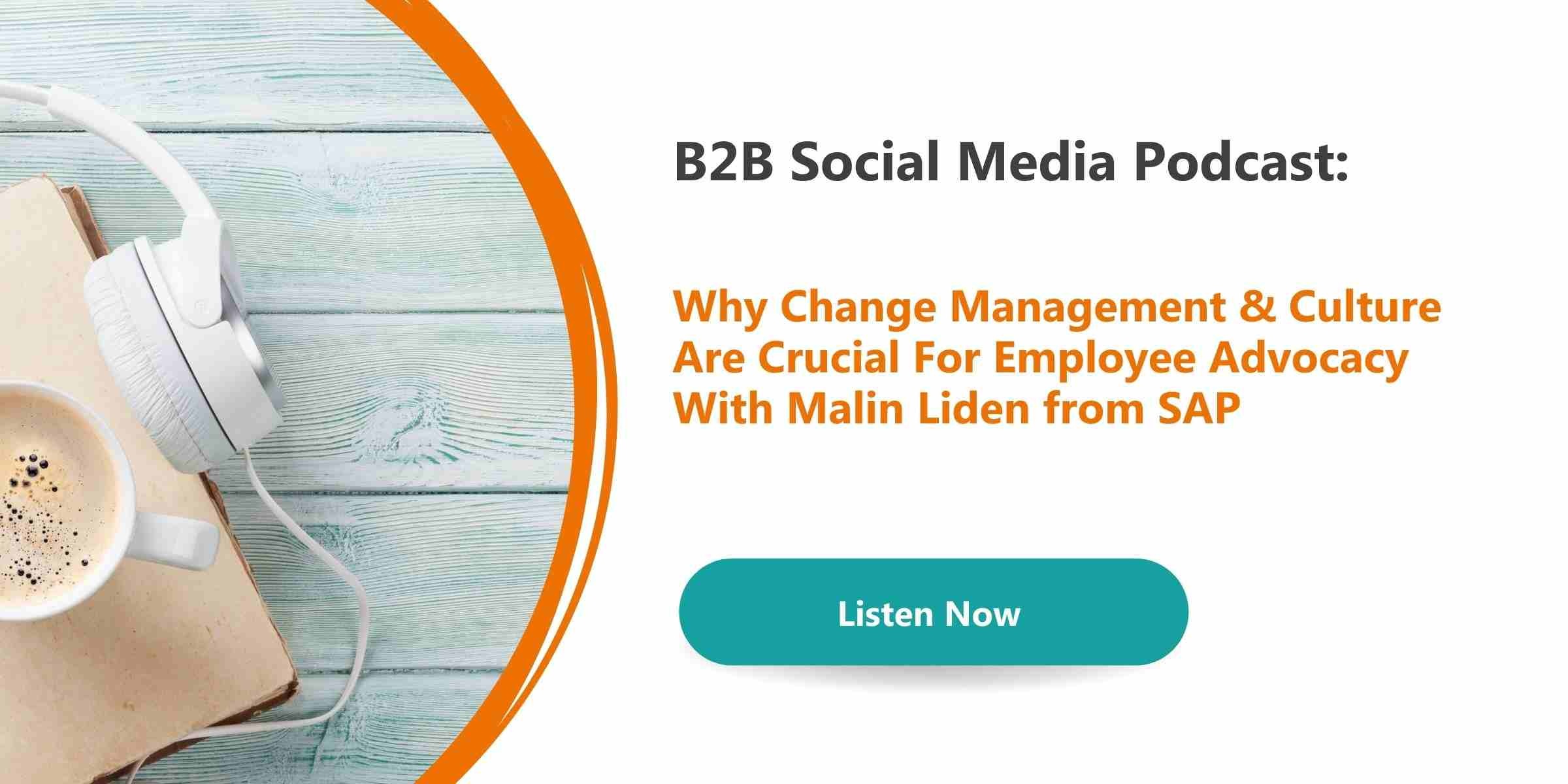
An employee advocacy programme is difficult to implement unless you have a positive company culture to begin with. It needs openness, transparency, and trust to work.
But what if you’re trying to change a company’s culture? Can employee advocacy help you turn a negative one into a positive one?
Yes.
If it’s done right.
And that’s a big if, because, as we’ve explored in other blog posts, many companies get employee advocacy wrong because of their company culture.
So, let’s look at how employee advocacy can improve workplace culture.
Creating Connections
Employee advocacy allows businesses to create/invest in networking opportunities, both within the business and beyond.
This can make employees feel more engaged in their roles, increase learning opportunities, and improve employee happiness. All of which will make them better at their jobs, more productive, and hopefully ensure that they stay long term.
One of the ways you could connect employees internally is by introducing clusters of employees who are interested in the same thing. This could be anything from a particular TV show, to Excel formulas, to a love of LinkedIn. They can then learn and inspire each other.
You could give them opportunities to network in Slack or Teams channels, organise virtual or in-person meetups, or create a LinkedIn group.
Making Leaders More Accessible
Traditionally, senior leadership is hard to get hold of, particularly as you get further down the corporate ladder.
To stay connected with employees, some higher ups may send out bulletins or newsletters. But it’s easy for these emails to be skim read, forgotten, or even ignored.
Social media is a better way to break down these accessibility barriers.
It’s faster, too – there’s no need to worry about fancy formatting or remembering everything a manager wants to share.
When they want to talk about something, they can post it there and then. This shorter post is more likely to be read by employees because of its brevity and the fact that it’s mixed in with posts from the rest of their network on a site they use regularly.
Obviously, leaders can’t share confidential information on social media. But what they can do is share their leadership values and best practices they’d like to see.
All employees then have the opportunity to see what senior leaders really stand for.
It can also make them more visible and approachable.
It breaks down silos within the organisation, creating better connections and a deeper understanding of the corporate mission(s).
This can humanise senior leadership, particularly in larger organisations where they’re often seen as mythical creatures that employees can’t or shouldn’t speak to.
It also introduces future employees to what the company stands for, attracting high-quality candidates who believe in not just what the company does on the surface, but its deeper mission, too.
When they start their new role, they’ll have a deeper understanding of how and why the company does what it does, which will help them to adapt to their new working environment faster.
Reducing The Heavy Lifting
Implementing an employee advocacy programme can be heavy work, especially if you have to prove the case for every new level you speak to.
The earlier you get senior leaders involved, the less arduous the process is.
To do this, you need to find someone who’s ready to try social media. Maybe they already post on it, but they don’t know how to use it from an advocacy point or view. Or they’re open to the idea but unsure of where to start.
Once they understand the benefits, you can walk them through what’s involved so that they can really feel the difference the right approach can make.
Conclusion
An advocacy programme can impact every part of a workplace culture. It’s as much of a reflection of a company’s culture as it is a way to build and reinforce positive habits.
Company culture and advocacy programmes have a reciprocal relationship. Both a positive culture and an advocacy programme require businesses to trust their employees to be open and honest. They also require leaders, and those running advocacy programmes, to let go of what they can’t control.
Simple steps like making senior leaders more approachable and encouraging employees to learn from, and network with, their colleagues and peers can make them more willing advocates, more engaged in their role, and better at their job.
Making senior leaders more accessible, meanwhile, creates a culture of equality, accessibility, and openness.
All these things work together to improve company culture, reduce time and cost to hire, and keep happy employees for longer.

